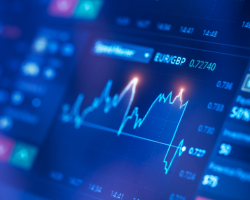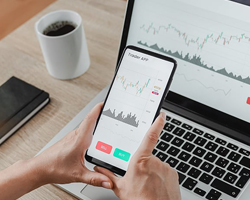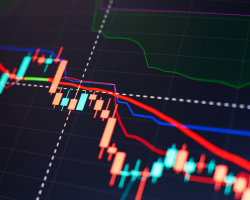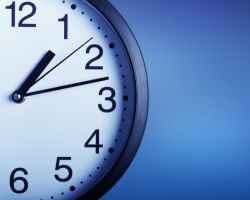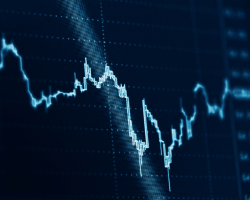How to Start Trading Forex in 2022
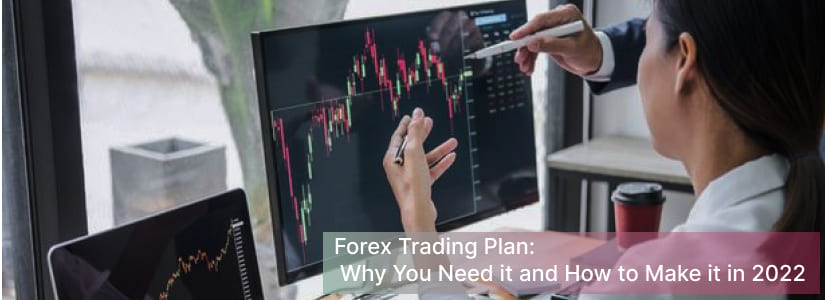
Forex trading is one of the most promising activities for those who want to have a source of income, independent of crises, quarantines, and other restrictions. In the foreign exchange market, some assets are always getting cheaper, others are getting more expensive, and every time you can make money on exchange rate fluctuations from the comfort of your home. All you need for forex trading is a computer, the Internet, some knowledge about trading fundamentals, and an account at a brokerage company.
Today, we will learn what steps you should take to start trading forex.
What is Forex Trading?
The first thing a novice trader should understand is the definition of the forex market. It is, in the classical sense, the international currency market, where a huge number of transactions are made every day. This market can be accessed by anyone who has access to the Internet.
People who trade at the forex market are called traders. Two very simple principles are the basis of trader's earnings: buy cheap now and sell later at a higher price (in the terminology of traders it is called to open a long position), or sell the asset now when the price is high and buy it back later at a lower price (to open a short position). Yes, yes, the bank allows the trader to both buy and sell various commodities (currency, stocks, etc.), even if the trader does not have any. This is called making transactions in non-deliverable over-the-counter financial instruments. To make the principle of earning on forex more understandable, here is an example:
In front of us is a chart of the Euro/US Dollar, which shows the dynamics of the exchange rate of these currencies. The trader analyzes the charts and the market situation as a whole to decide whether to buy or sell the currency. In our example, the trader decides to exchange euros for dollars at the rate of 1.10723 at the point indicated by the red arrow. And make a return exchange at the rate of 1.09947 at the point marked with a green arrow. The difference between these points equals 0.00776, which would be a yield of 7.7 dollars if the trader had traded for 1,000 Euros.
So, we have understood what the Forex market is and how you can earn on it. Now, let us move on to the next part and find out what makes it possible for a trader to begin investing even with a small amount (for example, $100).
Leverage in Forex Trading: Possibilities and Risks
After reading our example with the chart, you must have thought that forex trading requires a lot of money. But in fact, it's not so, you can start to trade with just a few tens of dollars on your account. It allows you to do it with leverage.
Margin leverage is a kind of coefficient that shows how much money a trader needs to make an operation for this or that sum. The standard leverage for most categories of instruments is 100 to 1. That means that to buy or sell $1,000 in the market, a trader only needs to have $10 on his account.
This principle allows earning large sums with a relatively small capital on an account. But you must always remember that the possibility of making a profit is inextricably linked to the risk of making a loss in case you have analyzed the market incorrectly. How to learn how to manage the risks in trading, we will tell you in the next article.
How Do I Begin Forex Trading?
Now after we have discussed the fundamentals of the forex market, it is time to move to the next part. For you to start trading you need to get access to the market - take care of the brokerage account. Let us see how the whole process works and what steps should be taken.
1. Choose Your Forex Broker
To find the best broker, you need to be clear about what broker's advantages are key for you and what you can turn a blind eye to.
First of all, make your list of requirements for a broker.
To understand your requirements for a broker, you need to answer the following questions:
- What currency pairs are you going to trade?
- What spreads will you be comfortable with?
- What leverage do you need?
- Will you be using the scalping method?
- What trading costs (commissions, spread) are you comfortable with?
Rank these questions by the level of importance to you, add your own and start your search.
With the list of requirements, you can identify several brokers that meet your requirements and start researching the broker's website
It will help you get full information about their terms and conditions and make an opinion about the transparency of their work. Pay attention to the following moments:
Compliance with regulatory requirements
When obtaining a license, a broker is thoroughly verified by a regulator. The company must prove transparency of legal and tax clearance, meeting charter capital and insurance fund compliance, and other requirements.
Trading Conditions
Every broker has its trading conditions. If a minimum deposit size is more important for a beginner, then the commission rate and smooth execution of orders will be important for an experienced and active trader.
Leverage
The amount of leverage varies among brokers and may vary from 1:50 to 1:500 or 1:1000. Look for a broker with the leverage level you need.
Commissions and Spreads
A broker earns commissions and spreads. A broker who uses commissions may charge a certain percentage of the spread, that is, the difference between the buying price and the selling price of a forex pair. Nevertheless, many brokers advertise the absence of commissions, while they can earn on a wider spread.
Initial Deposit
Most brokers allow you to open an account with a very small initial deposit, less than $100. Many brokers offer standard, mini and micro accounts with different initial deposit requirements.
Ease of Deposit and Withdrawal
Every forex broker has different withdrawal and funding procedures. Brokers may allow owners to fund their accounts online with a credit card, via mobile payment systems, or by bank transfer.
Assets Offered
Although a large number of currencies are available for trading, only a few are popular and, therefore, are traded with the most liquidity. Major ones are U.S. dollar/Japanese yen (USD/JPY), euro/U.S. dollar (EUR/USD), U.S. dollar/Swiss franc (USD/CHF), and British pound/U.S. dollar (GBP/USD). The broker may offer a huge selection of currency pairs, but most importantly, they offer the pair(s) you are interested in.
2. Open an Account with a Forex Broker
Registering an account on the broker's website is not time-consuming and generally does not differ much from registering the same email account. You will be offered a form in which you have to enter your first and last name, home address, e-mail, and a real phone number, which you will have to confirm with an SMS message. Be sure to provide correct data when opening an account so as not to have problems with withdrawal.
After filling out the form with personal information, one must read and accept the offer, thus completing the account registration process. Most traders ignore this moment and check the box without reading the contents of the document, which regulates the relationship between the client and the broker.
For most companies the practice of clients' verification where every trader has to provide scanned copies of the documents proving his identity and place of residence is a mandatory procedure. There is a fixed idea in people's minds that documents with the personal data of the owner can be shown only in corresponding state authorities. When a beginning trader faces the procedure of account verification, the first concern is the security: won't the scanned copies get into the public domain, won't they be used for fraudulent purposes. What goal are brokers pursuing when forcing clients to verify their accounts?
The registration of the account on the forex market does not cause any questions, but the verification procedure, on the contrary, confuses the traders. Its essence is to demand from the brokerage company to present copies of the documents confirming the registration data. It is a common practice, the purpose of which is the identification of each client following the requirements of international regulators. A reputable brokerage company with a license must comply with the rules of the regulatory authorities, which are based on anti-money laundering laws.
The broker's official website has a list of documents, copies of which must be sent by e-mail to identify yourself. Usually, it's an ID and a utility bill or bank statement.
The procedure is absolutely safe and carries no risks. History has no known cases of using traders' documents for purposes other than customer identification, as well as making the database publicly available on the Internet. After completing the organizational arrangements, you can proceed directly to the trading process.
3. Fund Your Trading Account
After you have verified your trading account, it is time to fund it so you can start placing real orders on the market. The whole process of depositing is pretty simple and depends on the method you choose. For instance, most brokers allow depositing through Bank Transfer, e-wallets (Payoneer, Skrill, Neteller, etc.), and even cryptocurrencies.
Logically, now you may be wondering what amount is appropriate to start trading forex. There is no unambiguous answer to this question. The minimum deposit at brokers can be from $10 to $500, depending on the type of account and commissions. The minimum deposit, sufficient to work with a position of 0.01 lots, starts at $10, but it does not mean that on such an amount you can earn money.
For example, you have decided to open a trade on the AUD/CHF. To open a 0.15 lot with a quote of 0.66737 and 1:200 leverage, you would need $50.05. This currency pair moves 30-80 pips in a day. In this case, each pip will cost $2.54. If you trade 25 pips in a day, you will earn $63.5.
Understanding the minimum amount you need to trade forex depends on the size of the lot you are trading. The higher the lot, the larger the deposit needs to be. That is due to the broker's requirements for collateral (margin). Margin, which is taken by a broker when opening position looks like this - on the account is a frozen required sum, which is calculated from price and the level of leverage.
That is why the brokers' minimum deposits often start at $300 to prevent the client from risking all of the money on the first trade.
4. Download Trading Platform
Before you start building a house, you first have to get all the tools you need. In trading, your main working tool will be the trading terminal.
It is through the trading terminal that you will interact with your broker, and place buy and sell orders for financial instruments. Don't worry, you will not have to pay because the terminal is provided by your broker for free. All you need to do is to download the terminal (usually, it`s MetaTrader 4) and install it on your computer. The interface is very understandable and intuitive so, there should be no problem. Still, if you have some doubts, you can always create a demo account to practice.
If you want to trade using a smartphone or tablet, you can install an app for Android or iOS. In this case, it is a good idea to check with your broker beforehand to find out whether these applications are available.
You need to learn how to use the tools you have obtained, because what good is a hammer if you can't hammer a nail with it? After you have installed the MetaTrader4 trading terminal, you should first master the basic functions of the platform, such as: working with charts of financial instruments (switching between time frames, types of charts), opening and closing positions, placing pending orders, etc.
All this is necessary to ensure that you do not get distracted by unnecessary details in the process of trading. All actions on opening, the closing of positions, and installation of pending orders should be made on automatic.
5. Practice on Demo Account
Trading on a demo account is using virtual money to trade in the forex market. You cannot withdraw and use this money, but it represents another value. First of all, demo trading gives a good experience and understanding of how the market works. Experienced traders and beginners use demo accounts to test trading strategies and robots. And only after that do they start trading on the real market with real funds.
For beginners, a demo account is a great way to get first impressions about the market and think about your own behavior after depositing (which amount to start trading on forex, we will talk about a little later). And there is a possibility to test other's trading strategies, indicators, and special trading robots, which can help in trading.
After successfully selecting your trading style and choosing a strategy, you need about a week to see how the virtual deposit will behave under your guidance. If all is well, then you need to wait another week to make sure that the actions performed are correct. If not, then the strategy should be debugged and the algorithm should be repeated.
Analyze the Market
For forex trading to be successful it is necessary to analyze the market and choose the currency pairs correctly. At the initial stage, you should not spread your attention following many currency instruments. It is better to focus on one or two pairs. It will help you thoroughly understand their pricing and dependency of trading on external factors. For a detailed analysis of the price correlation of currency pairs two types of analysis are used:
Fundamental. It allows you to consider the price movements of currency pairs in relation to each other in terms of the political and economic situation. This includes the emergence of new laws affecting the economy, the opening of new trade relations, and much more. Often, fundamental analysis can be helpful in trading when technical analysis can't.
Technical. It's an opportunity to follow the price movement and make a detailed analysis based on the study of charts and indicators.
Each of these types of forex trading analysis has its own features and methods, but for beginners, it is better to settle on the simplest of them. It will allow avoiding complicated strategies and save a lot of unnecessary information.
Forex Trading Strategies
You need a trading system to transform trading from feverish clicking buttons after each price fluctuation into a quiet respectable occupation that brings a regular stable income.
A trading system requires unquestioning obedience from a trader, but it removes a lot of psychological burden from him. Here you can see a simple example of how to build a trading system. You should create your own trading system, taking into consideration all your psychological peculiarities (your risk appetite, your attitude towards losses, your trading activity level, etc.).
Many beginning traders, for some reason, believe that the task of the trading system is reduced to just pointing out the point of entering the position. The choice of the moment to open a position is, of course, an important component of the process of successful trading, which is difficult to overestimate. But no less important is the question of exactly when to exit the trade - to close the position.
An important advantage of system trading is the possibility of its automation. When the entire trading process is spelled out in the form of a certain set of rules, it can be easily transposed into a programming language understandable to a trading robot. You can automate the entire trading process or its individual components.
Although the system requires from the trader strict obedience to all prescribed rules, these rules are not immutable. The matter is that even the most advanced and optimized trading system requires some adjustments over time. Everything in this world is flowing, everything is changing, and the financial markets are no exception to this rule.
Pros and Cons of Forex Trading
The main advantages of forex trading are:
Accessibility. Forex is one of the most accessible markets for private investors who do not have much capital.
Liquidity. Forex is the largest market of all existing markets, which means that there is the liquidity necessary for active trading, especially if we are talking about working with major currency pairs.
Technicality. When trading stocks and bonds, a trader needs to study a lot of companies' reports, and apply technical analysis to find entry and exit points. As for forex trading, it is possible to use only technical analysis of a chart, without resorting to fundamental analysis.
Minimal risk of manipulating quotes. If we compare trading stocks, there is always a risk that traders use insider information in transactions, as well as manage the prices of assets through the media. Currencies are less exposed to confidential information. Often the owners of insider information, which can affect the currency quotes, are the central banks and large corporations of different countries, but all of them are subject to public control and government supervision, which means that they will not intentionally and impudently "move" the quotes in one direction or another.
Minimum of fees and commissions. The forex market is rather transparent. A trader knows in advance what commissions he will have to pay when placing an order. There are no hidden fees and commissions.
Basically, there are no serious disadvantages to the forex market. Although, many traders noted its high volatility, which makes intraday trading strategies unsuccessful. We should say in defense of the fact that on any market there are high volatility hours, which allows experienced traders to increase their income many times. Those who are not able to work in such conditions, or do not want to risk on the volatile market, should simply avoid trading in the most volatile hours and before significant events or speeches of heads of central banks.
Are There Risks Associated with Forex Trading?
The risk in forex does not always depend on the trader, and often is associated with uncontrollable factors. However, most of them can be avoided by following certain rules. To begin with, let us consider what are the risks of forex trading. First of all, experts distinguish two main types:
- Non-trading risks (off-market);
- Trading risks (market).
Non-trading risks are the trader's probability to lose his funds as a result of the broker's actions, fraud, or economic situation. For example, if the broker is not conscientious, it can simply refuse to pay the trader's earned money. Such situations are quite rare, but still present in our time. To avoid that, choose your broker wisely.
Forex trading risks are a possibility to lose the capital as a result of own actions or because of the unpredictable market behavior. This type is much more common in the current conditions, but it can be minimized in different ways.
A strategy based on common sense is a great way to avoid the risk of losing your deposit. If a trader allocates a small amount of money to one position, 4-5% of the deposit, then even several losing trades, following one after another, are not a problem. Even after several losing trades in succession, it is possible to continue effective work and quickly return the lost positions.
Therefore it is necessary to remember about Stop-Losses, the placing of which at the opening of each position should be a rule.
Experienced traders do not recommend opening positions if you are not sure of their reliability. Are you in doubt? It's better to abstain. If the position turns out to be 100% unsuccessful, do not wait for a miracle from the sky, and close it immediately.
Conclusion
Forex trading is not only interesting but also a lucrative type of activity. This type of money-making can't be called easy and fast, but with the right approach, it can provide you with your future. Even if you start trading with a few hundreds of dollars, after a year the income can amount to thousands of dollars. These are not fantasies, but quite real things, proved by a lot of, now experienced traders.
About AdroFx
Being a well-established brokerage company, AdroFx offers the best trading conditions to its clients from 200 countries. Founded by experts with a couple of decades of overall experience, AdroFx is one of the best platforms on the market for shares trading. Either a newbie or experienced trader, both will find here what they are looking for since the company provides various trading accounts for different trading styles and goals.

